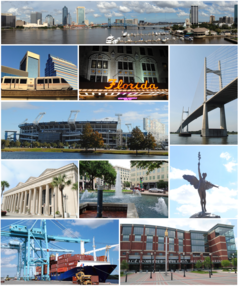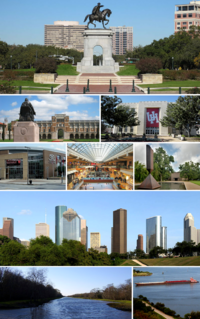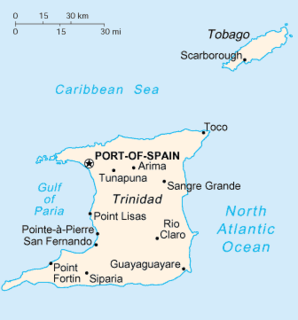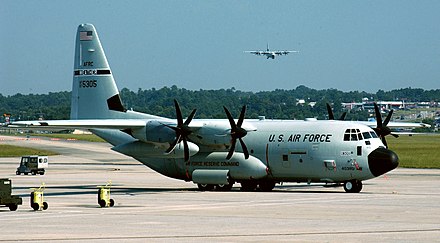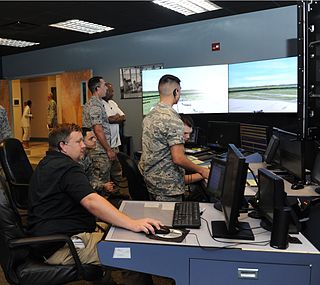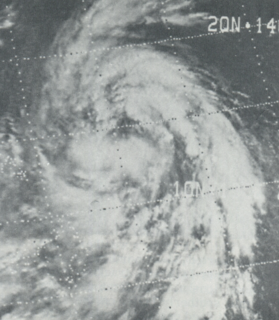| 53d Weather Reconnaissance Squadron | |
|---|---|
 WC-130J of the 53d WRS | |
| Active | 1944–1947, 1951–1960, 1962–1991, 1993–present |
| Country | |
| Branch | |
| Type | Squadron |
| Role | Tropical storm weather reconnaissance |
| Size | 10 aircraft, 20 flight crews |
| Garrison/HQ | Keesler Air Force Base, Mississippi |
| Nickname(s) | Hurricane Hunters |
| Decorations | Meritorious Unit Commendation Air Force Outstanding Unit Award |
| Commanders | |
| Current commander | Lt. Col. Kevin C. Green Jr. |
| Insignia | |
| 53d Weather Reconnaissance Squadron emblem (1995) [1] [n 1] |  |
| 53d Weather Reconnaissance Squadron emblem (approved 1 April 1963) [2] |  |
| 53d Reconnaissance Squadron emblem (approved 15 November 1945) [2] |  |
| Aircraft flown | |
| Reconnaissance | WC-130J Hercules WB-47E Stratojet WB-50D Superfortress WB-29A/B-29A Superfortress RB-17/TB-17 Flying Fortress B-25/WB-25D Mitchell |

The 53d Weather Reconnaissance Squadron, also known by its nickname, Hurricane Hunters, is a flying unit of the United States Air Force, and "the only Department of Defense organization still flying into tropical storms and hurricanes." [3] Aligned under the 403d Wing of the Air Force Reserve Command (AFRC) and based at Keesler Air Force Base, Mississippi, with ten aircraft, it flies into tropical cyclones in the Atlantic Ocean, the Caribbean Sea, the Gulf of Mexico and the Central Pacific Ocean for the specific purpose of directly measuring weather data in and around those storms. The 53d WRS currently operates the Lockheed WC-130J aircraft as its weather data collection platform.

The United States Air Force (USAF) is the aerial and space warfare service branch of the United States Armed Forces. It is one of the five branches of the United States Armed Forces, and one of the seven American uniformed services. Initially formed as a part of the United States Army on 1 August 1907, the USAF was established as a separate branch of the U.S. Armed Forces on 18 September 1947 with the passing of the National Security Act of 1947. It is the youngest branch of the U.S. Armed Forces, and the fourth in order of precedence. The USAF is the largest and most technologically advanced air force in the world. The Air Force articulates its core missions as air and space superiority, global integrated intelligence, surveillance, and reconnaissance, rapid global mobility, global strike, and command and control.

The Department of Defense is an executive branch department of the federal government charged with coordinating and supervising all agencies and functions of the government concerned directly with national security and the United States Armed Forces. The department is the largest employer in the world, with nearly 1.3 million active duty servicemen and women as of 2016. Adding to its employees are over 826,000 National Guardsmen and Reservists from the four services, and over 732,000 civilians bringing the total to over 2.8 million employees. Headquartered at the Pentagon in Arlington, Virginia, just outside Washington, D.C., the DoD's stated mission is to provide "the military forces needed to deter war and ensure our nation's security".
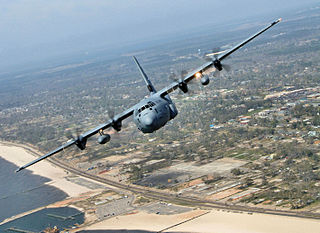
The 403d Wing is a unit of the United States Air Force assigned to the Air Force Reserve Command. It is located at Keesler Air Force Base, Mississippi and employs a military manning authorization of more than 1,400 reservists, including some 250 full-time air reserve technicians. It also controls an active duty associate airlift squadron consisting of active duty regular Air Force personnel integrated into the operations of its reserve airlift squadron.
Contents
- History
- Operational history
- Hurricane Hunter mission
- Tropical cyclone operational profiles
- Lineage
- Assignments
- Stations
- Aircraft
- Awards
- Cable television series
- See also
- Hurricane Hunters in fiction
- Notes
- References
- External links
The squadron was activated in 1944 during World War II as the 3rd Weather Reconnaissance Squadron, tracking weather in the North Atlantic between North America and Europe. Redesignated the 53d Weather Reconnaissance Squadron in 1945, the term "Hurricane Hunters" was first applied to its activities in 1946. The 53d became a part of the USAF before its inactivation in 1947, was reactivated in 1951 as a long range weather reconnaissance unit based in Bermuda and England, and since 1963 has been based in the southern United States or in Puerto Rico with its primary mission the measurement of tropical cyclones. The 53d WRS moved to its present home station at Keesler AFB in 1973, and after being briefly inactivated again between 1991 and 1993, became an Air Force Reserve unit.

Bermuda is a British Overseas Territory in the North Atlantic Ocean. It is approximately 1,070 km (665 mi) east-southeast of Cape Hatteras, North Carolina; 1,236 km (768 mi) south of Cape Sable Island, Nova Scotia; and 1,759 km (1,093 mi) northeast of Cuba. The capital city is Hamilton. Bermuda is self-governing, with its own constitution and its own government, which enacts local laws, while the United Kingdom retains responsibility for defence and foreign relations. As of July 2018, its population is 71,176, the highest of the British overseas territories.

Puerto Rico, officially the Commonwealth of Puerto Rico and briefly called Porto Rico, is an unincorporated territory of the United States located in the northeast Caribbean Sea, approximately 1,000 miles (1,600 km) southeast of Miami, Florida.
The Hurricane Hunters of the Air Force Reserve are distinct from those of the Department of Commerce's NOAA Hurricane Hunters, based at Lakeland Linder International Airport, Florida, [4] who use a pair of Lockheed WP-3D Orion and a Gulfstream IV-SP aircraft to also fly weather reconnaissance, data collection and scientific research missions. In accordance with its memorandum of agreement with NOAA, AFRC maintains a capability in the 53d WRS for five sorties per day from its home station and two deployed locations in support of requirements for the National Hurricane Operations Plan, or two sorties a day during winter storm seasons. The 53d also provides a subunit, the Chief, Aerial Reconnaissance Coordination, All Hurricanes ("CARCAH"), at the National Hurricane Center to coordinate the activities of both organizations. [5]

The NOAA Hurricane Hunters are a group of aircraft used for hurricane reconnaissance by the United States National Oceanic and Atmospheric Administration (NOAA). They fly through hurricanes to help forecasters and scientists gather operational and research data. The crews also conduct other research projects including ocean wind studies, winter storm research, thunderstorm research, coastal erosion, and air chemistry flights.

Lakeland Linder International Airport is a public airport five miles southwest of Lakeland, in Polk County, Florida. The Federal Aviation Administration (FAA) National Plan of Integrated Airport Systems for 2017–2021 categorized it as a national reliever facility for Tampa International Airport. The airport has a Class 1 Federal Aviation Regulation (FAR) Part 139 operating certificate allowing passenger airline flights. Annually, around March–April, the airport hosts the Sun 'n Fun International Fly-In and Expo, a six-day fly-in, airshow and aviation convention. It is the second largest such event in the United States after the Experimental Aircraft Association's (EAA) annual "AirVenture" event each summer at Wittman Regional Airport (OSH) in Oshkosh, Wisconsin. During the week of Sun 'n Fun, Lakeland Linder International Airport becomes the world's busiest airport with 60,000+ aircraft movements. In 2017 the airport had 129,504 aircraft operations, averaging 355 per day: 97% general aviation, 2% military, 1% air taxi, and <1% airline. In August 2018, 248 were aircraft based at the airport: 161 single-engine, 35 multi-engine, 42 jet, 9 helicopter, and 1 glider.

The Lockheed WP-3D Orion is a highly modified P-3 Orion used by the Aircraft Operations Center division of the National Oceanic and Atmospheric Administration (NOAA). Only two of these aircraft exist, each incorporating numerous features for the role of collecting weather information. During hurricane season, the WP-3Ds are deployed for duty as hurricane hunters. The aircraft also support research on other topics, such as Arctic ice coverage, air chemistry studies, and ocean water temperature and current analysis.
Concurrent with its operational mission, the 53d WRS is also tasked with recruiting, organizing and training assigned personnel to perform aerial weather reconnaissance, and its air crews are qualified to handle tactical airlift missions.

